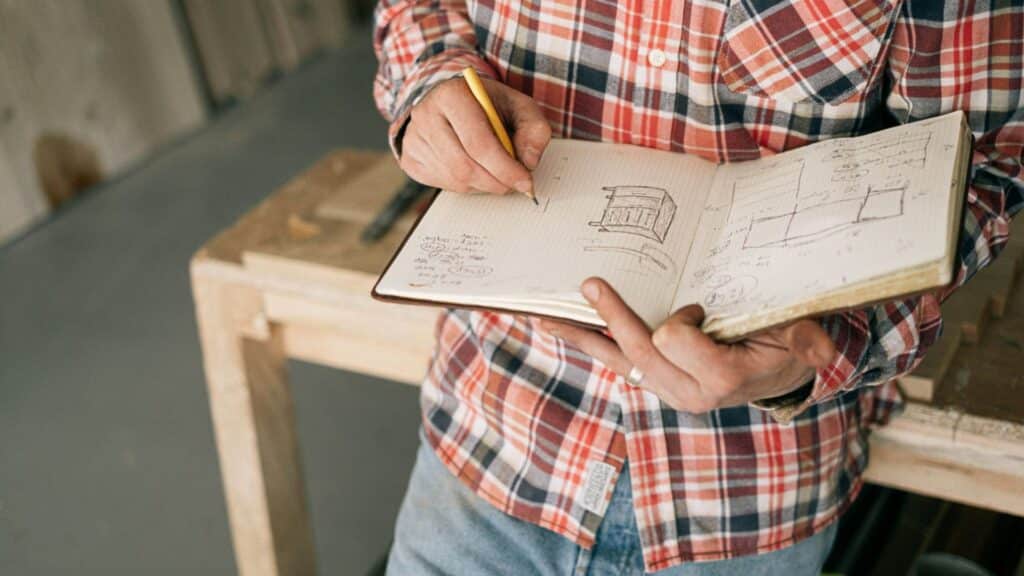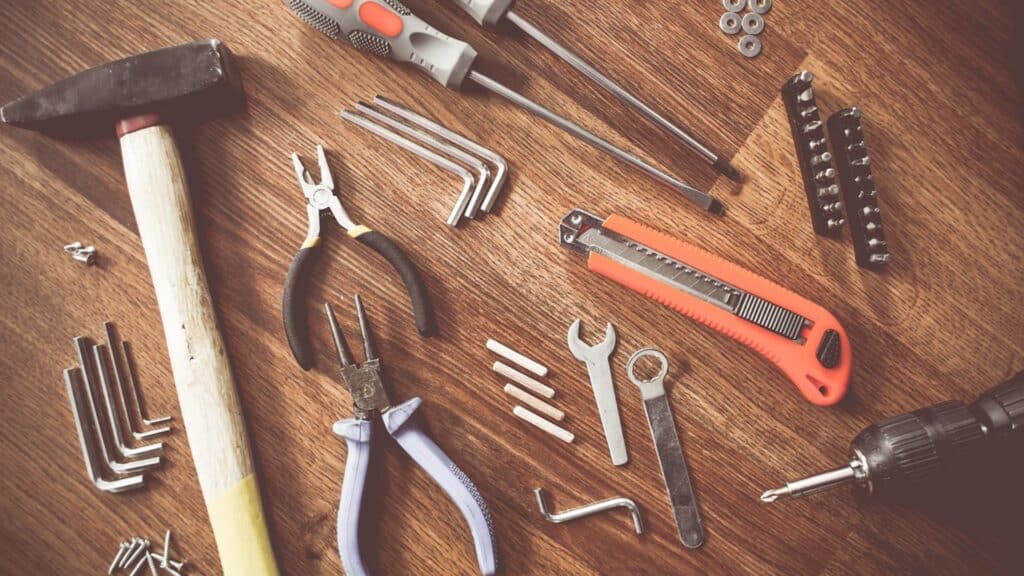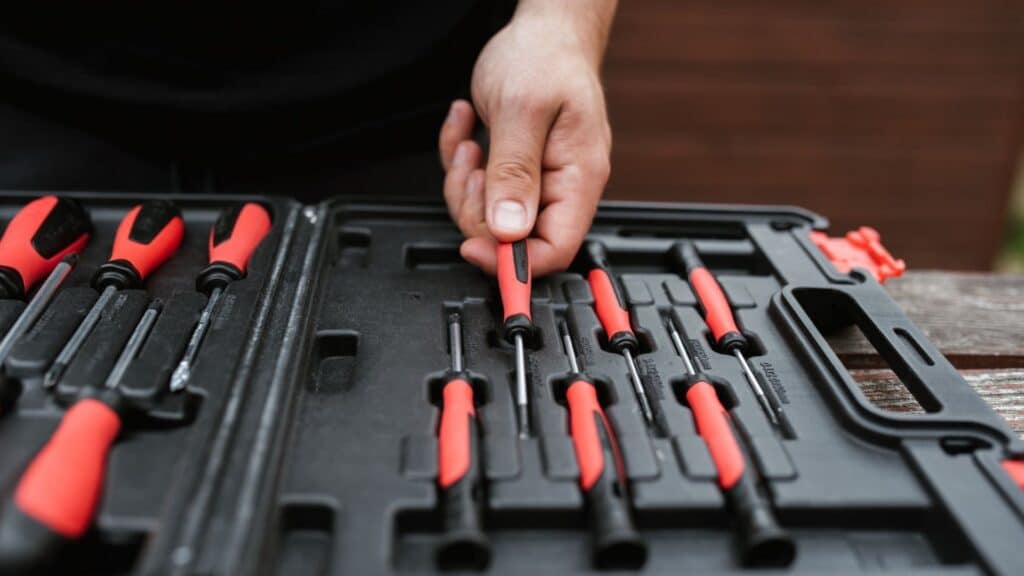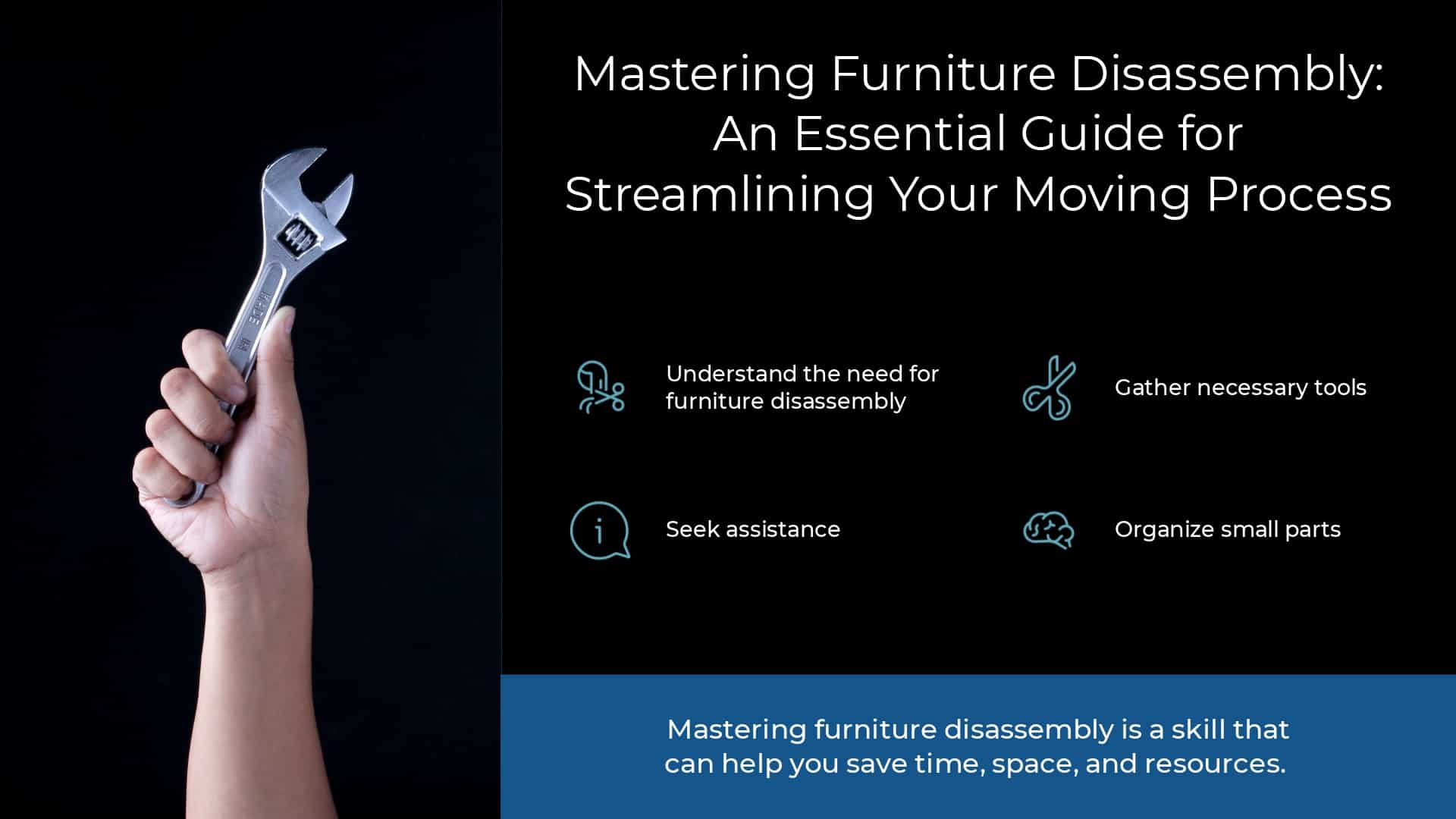Last Updated on May 28, 2023 by Pro Handyman Editorial Team
Shifting places is a monumental task, and disassembling your furniture can be challenging. Yet, it is a skill that can help you save time, space, and resources. Our detailed guide will give you the proficiency to dismantle furniture safely and effortlessly, making the whole moving process less strenuous.
Understanding the Need for Furniture Disassembly
The decision to disassemble your furniture heavily depends on the moving services you’ve signed up for. If your package includes furniture disassembly, the professional movers will manage it. If you still need to, you must prepare your furniture for transportation.

Practical Advice for Furniture Disassembly
Let’s delve into the techniques and best practices for disassembling furniture.
Seek Assistance
Disassembling heavy and voluminous items on your own can be tricky and risky. Having an extra pair of hands speeds up the process and ensures safety during disassembly. A trusted friend, family member, or neighbor can make the task manageable and enjoyable.
Gather Necessary Tools
Furniture disassembly requires the right toolkit. Most furniture pieces in your home are assembled using screws, bolts, and nuts, which can be removed with essential tools. Be mindful while using these tools to avoid any damage to your furniture.
Organize Small Parts
Small parts such as screws, bolts, and other furniture pieces can get scattered during disassembly. To prevent the loss, use Ziplock bags to keep track of these components. Dedicate a bag to each furniture piece and label it accordingly to avoid confusion during reassembly.
Required Tools for Furniture Disassembly
The essential tools for furniture disassembly include:
- Screws
- Bolts
- Nuts
- Hammer
- Screwdriver with interchangeable heads
- Wrenches
- Bolt cutters
If any additional tools are needed, they can be procured from a local hardware store.

Disassembling Furniture: A Step-by-Step Guide
Measurements
Before disassembly, measure the furniture, doorways, hallways, and other exit points. This helps identify the furniture pieces that need to be disassembled first.
Clean and Empty the Furniture
Remove all items from the furniture before starting disassembly. Pack and label these items separately for easy identification during reassembly.
Remove Detachable Parts
Fragile parts, such as doors or mirrors, could break if not properly secured during the move. Therefore, these components should be carefully removed and separately packed for safer transit.
Securely Pack All Components
Pack all furniture components, disassembled or not, with utmost care. Use packing supplies like furniture, blankets, bubble wrap, and packing paper to prevent any damage during transportation.
How to Disassemble Various Types of Furniture
Different types of furniture require other disassembly procedures. We provide instructions for disassembling various furniture, including couches, china cabinets, desks, beds, and wardrobes.
Reassembling Your Furniture
Reassembly is usually the reverse process of disassembly. Keep the manual handy or record the disassembly process to make it easier. It’s advisable to reassemble your furniture when fresh and well-rested to avoid mistakes.
Dealing with Glued Furniture
Disassembling furniture that has been glued or nailed together is not recommended. Instead, it’s best to transport such furnishings in one piece to avoid any damage.

Identifying the Right Tools for Furniture Disassembly
An essential step in the process of dismantling furniture involves having the correct tools on hand. You will likely need a screwdriver with variable heads, a set of wrenches, a hammer, and bolt cutters. Furthermore, fasteners such as screws, bolts, and nuts are also integral to disassembly. Not all furniture is built the same, so be prepared with various tools. For additional tools, visiting your nearest hardware store should suffice.
Comprehensive Steps for Disassembling Furniture
Assessing and Measuring
Before you take a piece apart, measure your furniture, doorways, and corridors. Many furniture parts can be transported without disassembly unless they are overly bulky or fragile. Evaluate each piece that needs to be disassembled and prioritize those you use less frequently, leaving the ones you use daily for last.
Cleaning and Emptying the Furniture
Before disassembly, you must clean your furniture and remove all the items. This includes removing items from the shelves, removing pillows from the couch, or stripping your bed of the mattress and bedding. Doing so ensures a cleaner working area and lesser debris to deal with later.
Removal of Detachable Pieces
Often, the furniture consists of fragile parts such as mirrors or doors, which, if not handled carefully, could break during the move. To prevent any damage, these parts should be removed and packed separately. The same applies to furniture legs and drawers. To facilitate reassembly, ensure each piece is securely packed and clearly labeled with the furniture it belongs to.
Securing your Belongings
When packing your disassembled furniture, ensure it’s done with utmost care. Use packing materials such as bubble wrap, furniture blankets, and packing paper to protect your furniture from scratches, dings, or dents. To secure the packed table, use duct tape.

Detailed Guide to Disassemble Specific Types of Furniture
Disassembling Couches, Sofas, or Loveseats
- Begin by removing all loose upholstery from the furniture.
- Next, detach the arms from your couch, ensuring each screw from each armpiece is carefully removed.
- Utilize your screwdriver to disassemble the frame, removing every screw that holds the couch frame and its back support.
- Small items like screws and bolts should be placed in a labeled zip-lock bag. More significant furniture components should be wrapped in moving blankets or stretch wraps for protection.
Disassembling China or Display Cabinets
- Removing movable parts such as shelves, doors, and drawers.
- Once these parts are removed, focus on the hardware securing the cabinet.
- With the hardware removed, the cabinet can then be safely detached.
- Wrap all loose parts securely using the stretch wrap and blankets to ensure a safe transfer.
Disassembling Desks or Tables
- Begin with loosening the screws to detach each leg assembly and carefully separate the braces.
- If your table has an apron attached to the legs, you must remove it next.
- Finally, flip the table over to locate the bracket fastened to the tabletop underside. Start unscrewing the legs from the frame or remove the screws securing the bracket to the tabletop.
After each step of the disassembly process, it’s crucial to secure the removed parts appropriately to avoid any damage.
Disassembling Bed Frames
- Begin by removing the mattress and box spring from the bed frame.
- Next, unscrew the bolts holding the headboard and footboard to the side rails.
- After removing the headboard and footboard, focus on the cross rails or support slats. Typically, these either slide out or can be unscrewed.
- For easy reassembly, keep all screws and hardware together, preferably in a labeled bag.

Best Practices for Disassembly
While having the right tools and instructions for disassembly is crucial, it’s equally important to follow best practices for a safe and effective process. Here are some suggestions:
- Organize Your Workspace: Ensure that your workspace is clear of any obstructions that might cause injury or damage to your furniture.
- Label Everything: When disassembling furniture, it’s vital to label each component and where it came from. This will make the reassembly process much more manageable.
- Bag the Hardware: Small parts such as screws, nuts, and bolts can easily get lost. Therefore, it’s best to keep them in small, labeled bags.
- Take Pictures: Before and during disassembly, take pictures of your furniture. These will be invaluable during reassembly, especially if the table has complex structures.
- Safety First: Always remember to protect yourself by using gloves and safety goggles when disassembling furniture. This is particularly important when dealing with glass or sharp edges.
In conclusion, furniture disassembly requires careful planning and preparation. However, you can efficiently disassemble your furniture with the right tools, clear instructions, and best practices while minimizing potential damage. Knowing how to disassemble your furnishings correctly is an invaluable skill, whether moving, redecorating, or just wanting to create more space.
